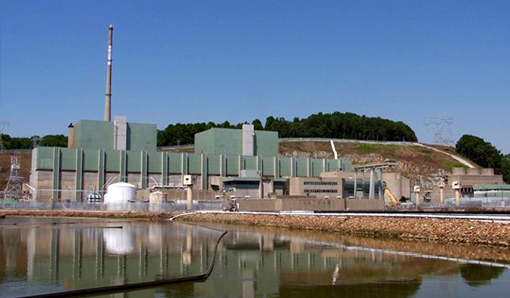The Nuclear Regulatory Commission approved a new rule on spent nuclear waste, ending a two-year suspension of licensing decisions after a court invalidated the old rule.
The new rule, called the “Continued Storage of Spent Nuclear Fuel,” adopts findings from a generic environmental impact statement and concludes that spent nuclear fuel can be safely managed in dry casks for more than 100 years. However, the NRC stressed that “The rule does not authorize, license or otherwise permit nuclear power plant licensees to store spent fuel for any length of time.” Adoption of the new rule allows the NRC to lift the licensing moratorium.
The NRC wasted no time resuming licensing decisions. Two days after the new rules were approved, the agency issued a final environmental impact statement for Exelon Nuclear’s Limerick Generating Station in Pennsylvania. The licenses for the plants two reactors expire in 2024 and 2029. The relicensing still requires final approval from the NRC’s Office of Nuclear Reactor Regulation.
More: PowerMag
Peach Bottom Gets OK for 12.4% Power Uprate

More: The Philadelphia Inquirer
Plutonium Wafer Dropped at Maryland Test Lab

More: Nuclear Street
New Distributed Wind Capacity Falls 83%, DOE Says
New U.S. distributed wind deployments declined 83% in 2013 to 30.4 MW, according to a Department of Energy report issued last week. The decline in new generation designed for local loads was in line with the overall shrinkage in wind installations last year following the expiration of federal production tax credits.
The Distributed Wind Energy Market Report said 2,700 units were installed last year in 36 states, Puerto Rico and the U.S. Virgin Islands. Residential installations made up 40% of the market, followed by agricultural at 26% and commercial and industrial at 20%.
Since 2003, 72,000 wind turbines in distributed applications have been installed in the U.S., representing 842 MW in capacity. The top states for distributed wind were Colorado, Kansas, Ohio, Massachusetts, Arkansas, Indiana and North Dakota.
More: Department of Energy
EPA May Force Drillers to Cut Methane Leaks
The Environmental Protection Agency is considering rules to force gas well drillers to cut methane emissions, EPA Administrator Gina McCarthy said. McCarthy, speaking to investors in New York last week, said the agency will decide this year whether to issue regulations to reduce fugitive methane emissions, or depend on voluntary cuts from the drilling industry.
Methane is 21 times more potent than carbon dioxide, the target of the Agency’s recent, sweeping emissions rules. “We are looking at what are the most cost-effective regulatory and/or voluntary efforts that can take a chunk out of methane in the system,” McCarthy said. “It’s not just for climate, but for air quality” reasons, she said.
Rules could take effect by 2016, she said.
More: Bloomberg
DOE Grants $7.25 Million for Wave, Tidal Research
The Department of Energy has awarded $7.25 million to six organizations working to develop marine and hydrokinetic technologies to generate power from waves, tides, rivers and ocean currents.
Pacific Northwest National Laboratory, the University of Washington, Scientific Solutions, Florida Atlantic University and Oregon State University will share $3.5 million in grants for instrumentation research. A consortium of Oregon State, the University of Washington and the University of Alaska Fairbanks will get $4 million for research to accelerate the development and deployment of wave and tidal power technologies.
More: Department of Energy
DOE Report Shows Progress in Offshore Wind Industry
Two offshore wind projects are in the initial stage of construction and 14 more are in advanced planning stages, according to a federal report issued last week. The Offshore Wind Market and Economic Analysis, issued by the Department of Energy, says the 16 projects represent nearly 4,900 MW of potential offshore wind energy capacity.
The report details the construction progress of the Cape Wind and Block Island projects in New England. It also noted that three other offshore projects – Fishermen’s Energy off New Jersey, Dominion off Virginia and Principal Power off the coast of Oregon – received up to $46.7 million each for final design and construction.
More: Maritime Executive

